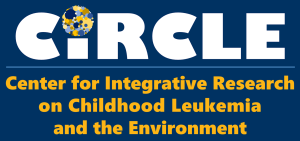C-section May Increase the Risk of Childhood Leukemia
When weighing the pros and cons of having a vaginal or cesarean birth there are many factors to consider – the risks of bleeding, infection, uterine rupture, etc. But, recent research suggests that there may be one more thing to keep in mind: a C-section delivery can increase the risk of a child developing leukemia later in life.
Several studies conducted by researchers from the Center for Integrative Research on Childhood Leukemia and the Environment (CIRCLE) and the Childhood Leukemia International Consortium (CLIC) have shown that children born via c-section are more likely to develop leukemia than those born via vaginal delivery, after adjusting for other risk factors. These results suggest that there are possible connections between c-section, abnormal development of the immune system, and childhood leukemia.


Abnormal immune development can cause childhood leukemia.
Acute lymphoblastic leukemia (ALL) is the most common type of childhood leukemia. Childhood ALL is a cancer of the immune cells which is most common among very young children. Doctors think that abnormal immune development very early in life may cause childhood ALL. For example, it has been shown that coming into contact with other children for long periods of time starting at an early age – for example, contact with older siblings and daycare attendance – PROTECTS against childhood ALL. The theory is that exposure to a variety of infections very early in life trains the immune system, thereby reducing the chances that any later infection (or the body’s reaction to that infection) will cause leukemia. Children who don’t get this early “immune education” will inevitably be exposed to common childhood infections, but their uneducated immune systems are more likely to react poorly, and in some very rare cases this can lead to leukemia. In the same way, we believe that abnormal immune development following c-section may also cause childhood leukemia.
C-Sections may alter immune development after birth.
In the womb, babies are not normally exposed to any germs at all. As soon as they are born, they start to acquire the normal germs that live in the mouth, in the intestine, and on the skin. This is called “microbial colonization”, and it helps prepare the baby’s immune system to respond to future attacks. During a vaginal birth, the baby comes into contact with beneficial bacteria while passing through her mother’s birth canal. This exposure creates antibodies that remain active for the first few weeks of the baby’s life, bolstering the neonatal immune system. A vaginal delivery also forces the baby to respond to an intense environment which causes a spike in levels of a hormone called cortisol. This increase in cortisol levels at birth also helps to regulate the baby’s immune reactions.
In contrast, during a pre-labor c-section the baby is NOT exposed to the mother’s microbial flora, which hampers normal immune development. The result is a lack of essential antibodies among babies born via elective c-section. Also, because they may not experience the normal stress of birth, these newborns also have lower cortisol levels at birth. In combination, these factors might disrupt normal immune development leaving some elective c-section babies with weaker immune responses after birth.
Childhood leukemia is a rare disease.
C-section is associated with a small increase in the risk of childhood leukemia, but c-sections are responsible for only a small number of additional cases each year. Other risks will likely be paramount in a mother’s decision to choose between a vaginal delivery and a cesarean one. However, for women who have been medically approved by their doctors to attempt a vaginal delivery, it may be reassuring to know that our research findings further reinforce the benefits of this birth method.
You can learn more about our findings on our publications page.
References:
Francis SS, Selvin S, Metayer C, et al. Mode of delivery and risk of childhood leukemia. Cancer Epidemiol Biomarkers Prev. 2014;23(5):876-881. doi:10.1158/1055-9965.EPI-13-1098
Marcotte EL, Thomopoulos TP, Infante-Rivard C, et al. Caesarean delivery and risk of childhood leukaemia: a pooled analysis from the Childhood Leukemia International Consortium (CLIC). Lancet Haematol. 2016;3(4):e176-e185. doi:10.1016/S2352-3026(16)00002-8
Wang R, Wiemels JL, Metayer C, et al. Cesarean Section and Risk of Childhood Acute Lymphoblastic Leukemia in a Population-Based, Record-Linkage Study in California. Am J Epidemiol. 2017;185(2):96-105. doi:10.1093/aje/kww153


